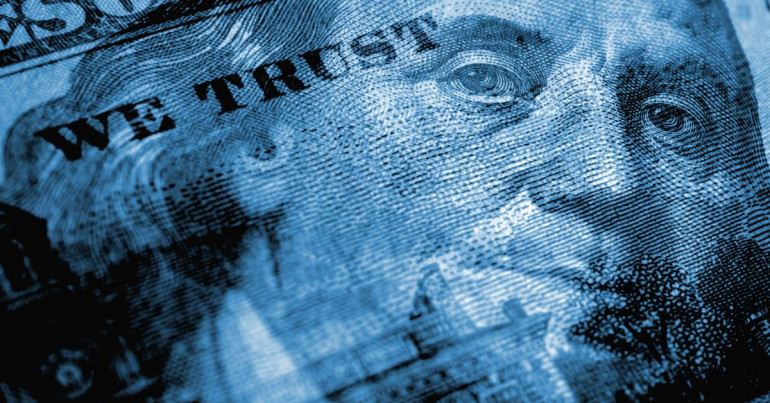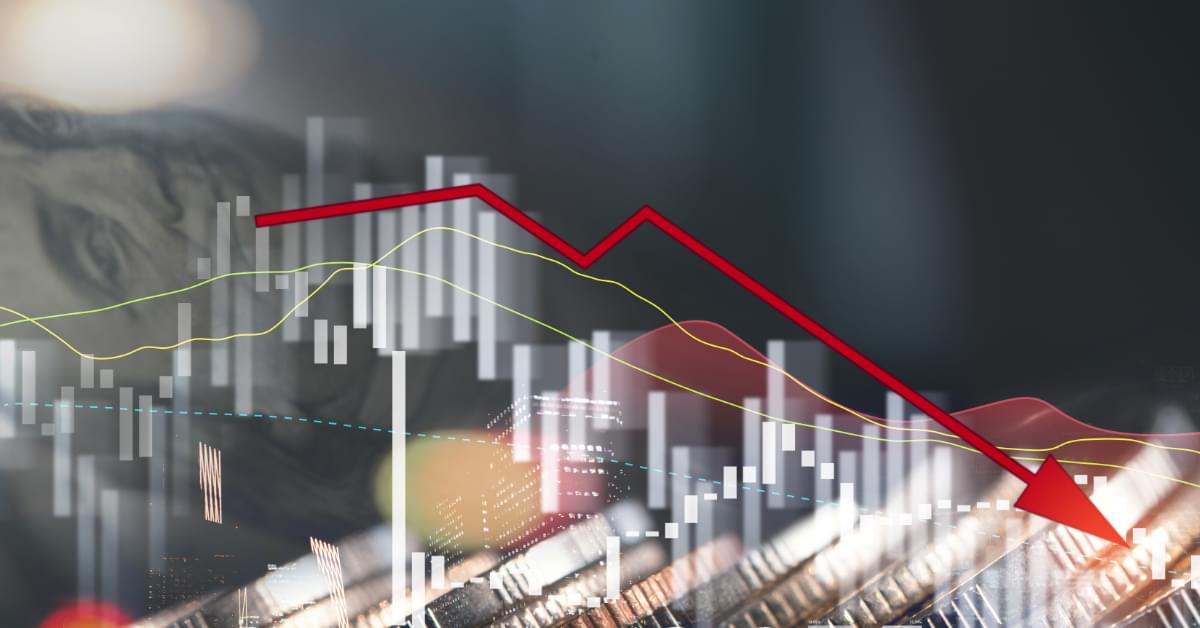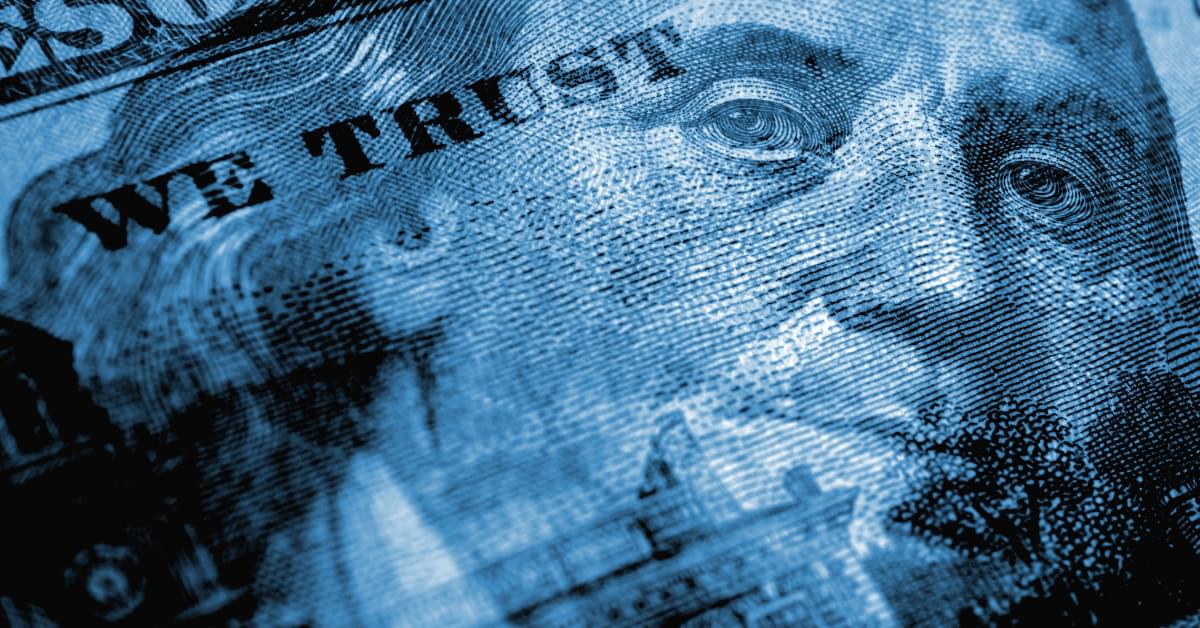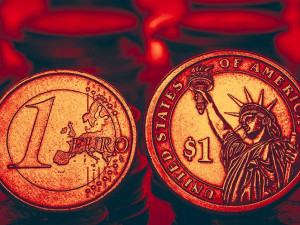
The US dollar collapsing is not impossible, but it is extremely unlikely. Furthermore, if the US dollar did somehow collapse, the world economy would also crash due to the dollar’s anchoring into the global economic system.
Currently ninth on our list of the top 20 strongest currencies, the US dollar has a special status as the global reserve currency. This dominance as a reserve currency and its root as a currency peg means that the world economy is, in many ways, reliant on the dollar. As of the fourth quarter of 2022, 58.36% of all global reserves are held in US dollars.
For this reason, the US dollar crashing by itself is close to impossible. Several drastic changes to the world economy would need to occur before the US dollar collapsed, such as a severing of all currency pegs and changing global reserve currencies.
Even in a black swan event, there would be severe ripples to other world economies before the US dollar ever collapsed.

What does it take for a currency to collapse?
A currency collapse occurs when the currency loses its value completely or is abandoned by a government or population. A currency can lose value for complex reasons, but generally speaking, high inflation, high debt, political instability and a general breakdown of the country will cause a currency to collapse.
Our list of the top 20 weakest currencies in the world includes several currencies that have gone through an economic collapse, such as the Venezuelan Bolivar (VEF). This was caused by the government hastily adopting a floating exchange rate, and the price of oil collapsing, causing shocks to the economy that sent the currency spiralling downwards.
The lack of trust in an economic system and the currency is also what will contribute to further decline, as investors will be hesitant or pull out entirely.
What would happen if the dollar collapsed?
In the near-impossible event that the US dollar was to collapse, the result would most likely cause the worst economic downturn history has ever seen. People often forget that the US dollar is the official currency of 11 countries, not just the US, so these countries would also collapse.
There are also approximately 66 currencies directly pegged to the US dollar, so these currencies would need to become free-floating instantly, which as per the example in Venezuela, can often cause severe economic troubles. The dollar collapsing would also cause the estimated 58.36% of wealth in all global reserves to become worthless and certainly cause several governments to go bankrupt.
This underpinning of the US dollar in the global economy means that almost all world economies, even rivals such as Russia and China, have an interest in keeping the dollar afloat, as the fallout could potentially devastate their own economies.
The value of a currency is also based on the necessity of the country’s economy and the trust in its system, as well as the value. Sitting at the top spot with a GDP of $23.3tn, it’s unlikely that the US economy will drop from this spot anytime soon.
A lot of cryptocurrency enthusiasts speculate that cryptocurrency is a necessary replacement for fiat currency and banks. Yet as we cover in our article, while cryptocurrency is an efficient mode of exchange for currency, it will take a lot more for it to replace the entire banking system, and as a currency, cryptocurrency has leagues to go before it could even challenge the US dollar.
The hegemony of the US dollar
This status of the US dollar underpinning the world economy did not happen by chance and is a testament to the US’s economic success, and also its intentional economic tactics and beguiling foreign policy.
The Bretton Woods System allowed the US to help repair the world economy after the Second World War, but subtly cement itself as the leading economy. All 44 allied nations which agreed to the system had their currencies pegged to the US dollar in a fixed exchange rate, and the US dollar would be fixed to the price of gold, allowing a gold standard by proxy for all nations.
Despite the system only lasting from 1944 until 1971, this was enough to establish a soft dominance of America’s currency, as many leading currencies still rely on the dollar to stabilise their own currency, such as the Hong Kong dollar (HKD) and the United Arab Emirates dirham (AED).
The Bretton Woods conference also led to the establishment of both the IMF and the World Bank, which both operate internationally, to foster economic stability and provide loans and support to low and middle-income countries. However, the sheer size and dominance of these two organisations has drawn criticism, as both have been accused of showing favouritism and creating a state-dominated economic system.
As both organisations are American, and influenced by a small number of economically powerful countries who contribute to the funding, naturally the decisions made (such as choosing leadership and which countries to support) are biased. Many have made the assertion that this contributes to and reinforces global economic inequality, which has come to be known as global apartheid.
The Petrodollar
Petrodollar is a term to describe the vast amount of dollars available in reserves specifically for purchasing oil. Oil is traded in dollars, currently around $83-84 dollars per barrel (BBL) depending on the type of oil. Oil is traded in dollars to create simplicity with international trading, but also for the reasons listed above – the enforced use of US dollars, and the general dominance of the American economy.
The US has put oil at the heart of its foreign policy, with a de facto deal with Saudi Arabia in 1975 consolidating this, trading approximately $2bn worth of military contracts and military protection for the assurance that oil sales were made exclusively in dollars. The OPEC were also convinced shortly after to price their oil in dollars, and furthermore, reinvest their surplus petrodollars into US government debt securities, in exchange for similar levels of military and economic protection, which further strengthened the petrodollar.
Recent moves from Saudi Arabia have suggested that the dominance of the petrodollar might be challenged for the first time, but there is no sign yet of the dollar losing the top spot.

Conclusion
Therefore, the US dollar is potentially the most unlikely currency to collapse, and its deep intertwining with the world economy means that a collapse might not even be possible.
The concern is not whether the US dollar is going to collapse, but whether the US dollar is too strong. While a collapse seems almost impossible, this does not stop the US economy from being unstable. As demonstrated by the Great Recession, wobbles in the US economy cause unbalanced effects to the rest of the world economy.
In 2023, the US dollar has gone through some troubles with inflation and concerns of a recession, but it remains one of the most secure currencies in the world. The US dollar shows no sign of losing its place as the world’s reserve currency, and is still $5.6tn ahead of China with its GDP.
Looking to transfer your currency into USD? At CurrencyTransfer, we provide better-than-bank exchange rates, full transparency, access to various tools, as well as personal guidance when you need it. Sign up now to open your account.
Caleb Hinton
Caleb is a writer specialising in financial copy. He has a background in copywriting, banking, digital wallets, and SEO – and enjoys writing in his spare time too, as well as language learning, chess and investing.



